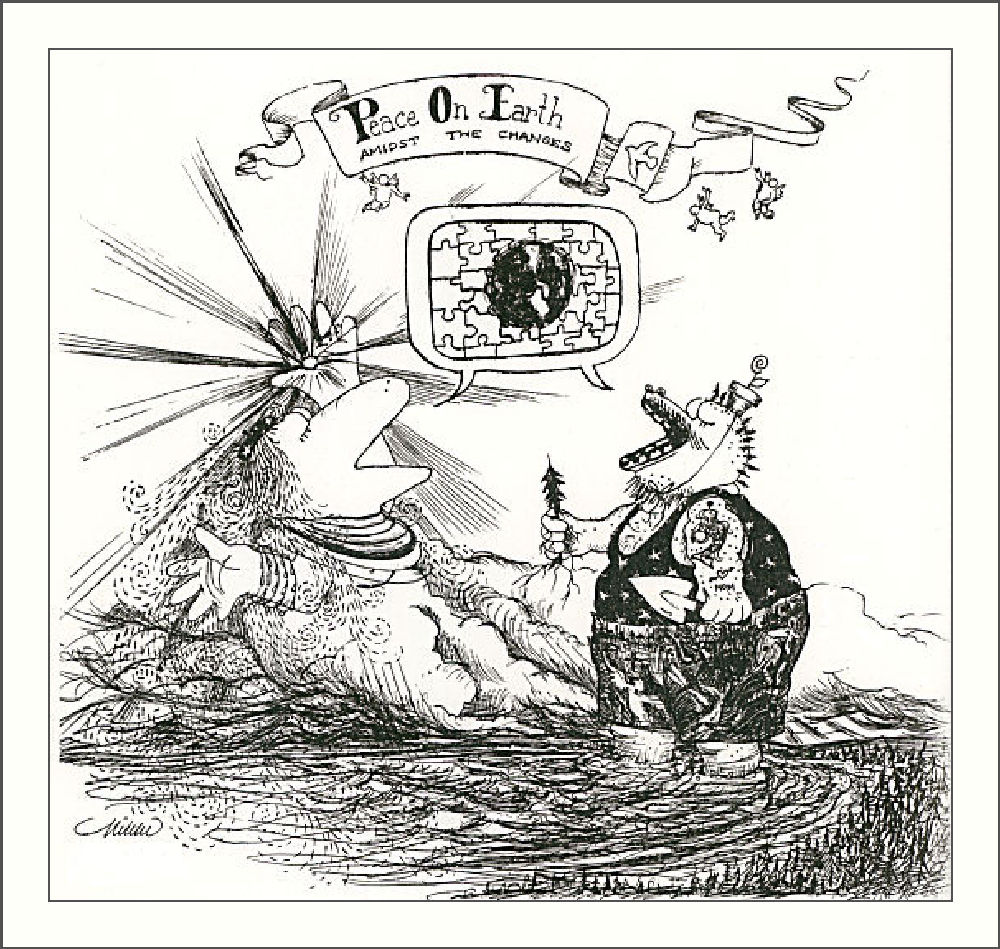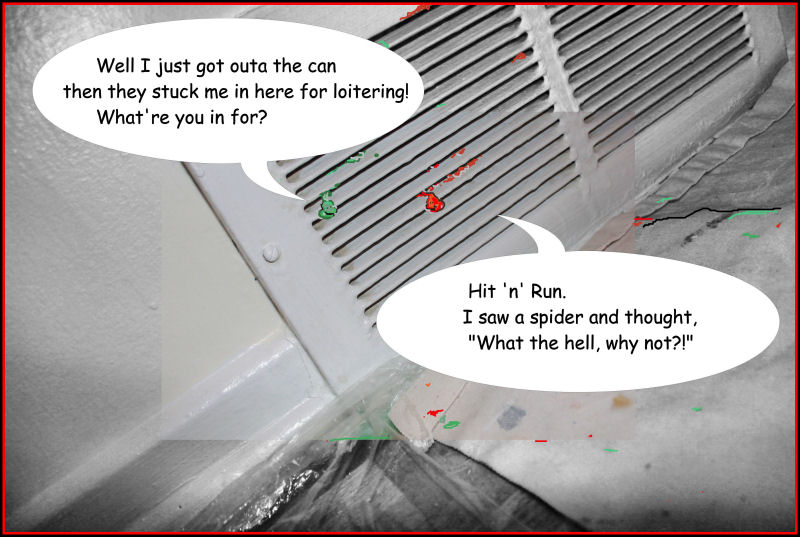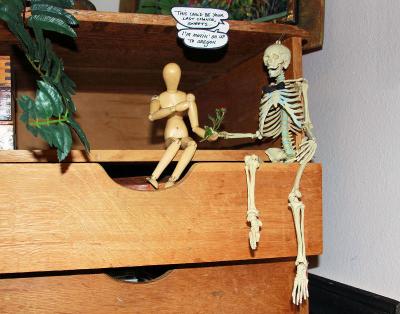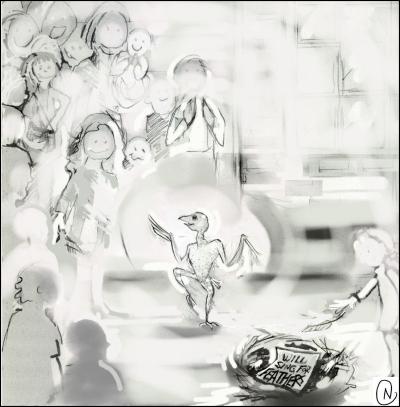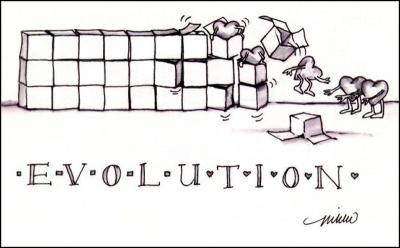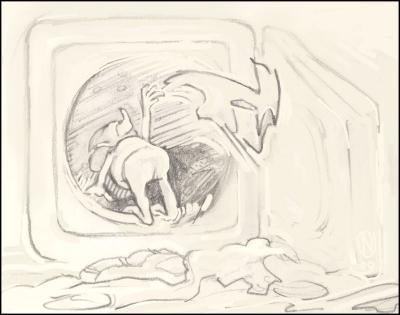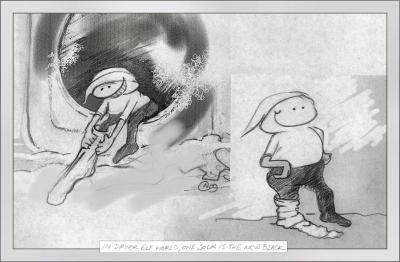cartoon
« Previous EntriesExhibizone: Humorous 2024
Friday, May 10th, 2024
Peace On Earth amidst the changes, Pen and Ink drawing, 1999. Limited edition prints available. Showcased in Exhibizone’s “Humorous 2024” online exhibition May 10 – July 10th.
Soccer Mom
Sunday, May 8th, 2022
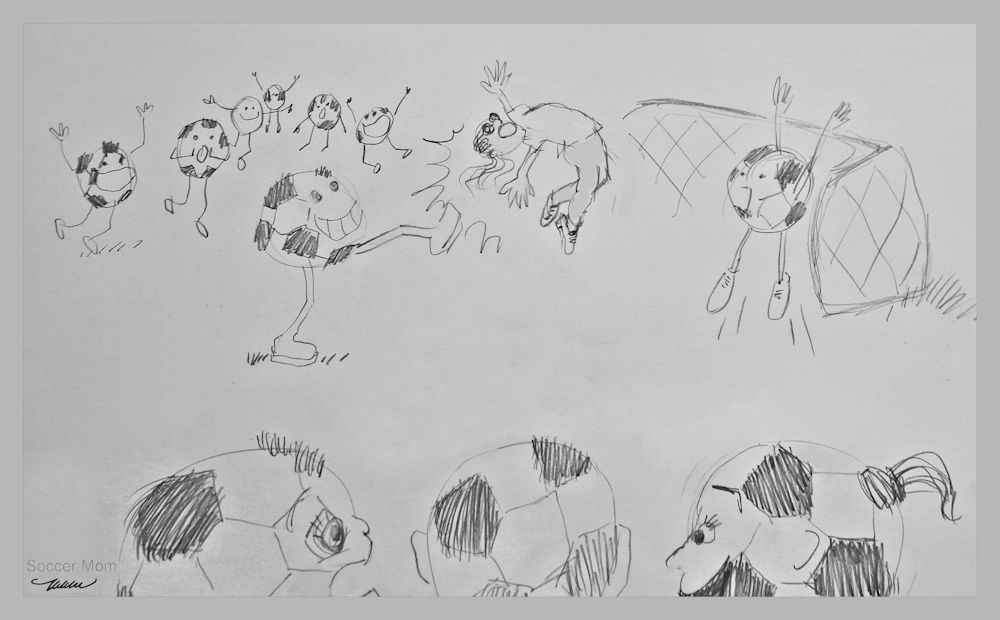
Soccer Mom, 16 x 20 graphite and digital
Dr. Ip
Friday, November 25th, 2011
The move west, and renovating homes around that, has unfortunately thrown my career on the back burner. Hence the home improvement tip brought to you by Dr. Ip, another new character based on good ol’ Monte, who has evolved since 1974 and still plays a part in my expressions today. He’s getting a good work-out these days!
The secret life of wall paint
Wednesday, November 23rd, 2011
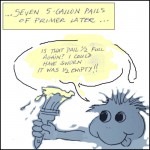 I have a whole new respect for all trades-people! All I’ve had time and inclination for art-wise are a few little cartoons using my laptop now and then. I’m going a little nutty with all the wall painting here in Ottawa (Canada), renovating a townhouse to get it ready to rent. With no TV in the evenings I’m having some fun with the secrets revealed to me as I work. Monte is optimistic….
I have a whole new respect for all trades-people! All I’ve had time and inclination for art-wise are a few little cartoons using my laptop now and then. I’m going a little nutty with all the wall painting here in Ottawa (Canada), renovating a townhouse to get it ready to rent. With no TV in the evenings I’m having some fun with the secrets revealed to me as I work. Monte is optimistic….
A continuing saga
Friday, October 22nd, 2010
“This could be your last chance, Sweets. I’m moving on up to Oregon.”
The Studio Affair saga on previous blog posts: October 20th, 2009, October 28th, 2008 , October 30th, 2007
That’s right, me and all the skeletons in my closet are moving to Oregon, so the painting now is all about walls. I’ve bought a small 4 x 6 sketchbook, hoping to sneak in some time to do a few thumbnail drawings of my travels this year.
The past six months: starting with driving up to Madison, Wisconsin at the end of April to set up the Dancing With Trees Exhibition. After the show opening, it was back to Dallas then shortly afterward to Singapore for 3 weeks. That was amazing! Two days after returning from Singapore I drove up to Ottawa, Ontario to visit our sons. At the end of June, I then drove back down through Michigan to meet my internet artist-friend, Virginia Wieringa (triple amazing!) then across to Wisconsin to pack and pick up the DWT show, then through Chicago to drop off Morning Light 01, through the U.S. Midwest and back to Dallas.
 Two weeks later I drove up through Oklahoma and North Dakota into Saskatchewan, then into Alberta to visit family. I took so many photos on the drive east across Canada two weeks later (mostly tree photos of course), through the prairies and the Great Lakes region back to Ontario, where I stayed for another 2 weeks. Then back down to Dallas again! During September we found out that my husband is transferred to Portland, Oregon for work. So the first week of October we both drove west in separate cars, across the Continental Divide, in awe of the gorgeous red rocks and incredible geography in AZ and Utah, finally reaching our future home west of the Columbia River Gorge, and just east of the Pacific Ocean shores and north of the Sequoia and Redwood forests. I drove back to Dallas with a truck and trailer to refill, and will make the trip across only one more time before winter – hopefully the weather holds up. I’m excited to get to work again after such a crazy year of travel – lots of inspiration.
Two weeks later I drove up through Oklahoma and North Dakota into Saskatchewan, then into Alberta to visit family. I took so many photos on the drive east across Canada two weeks later (mostly tree photos of course), through the prairies and the Great Lakes region back to Ontario, where I stayed for another 2 weeks. Then back down to Dallas again! During September we found out that my husband is transferred to Portland, Oregon for work. So the first week of October we both drove west in separate cars, across the Continental Divide, in awe of the gorgeous red rocks and incredible geography in AZ and Utah, finally reaching our future home west of the Columbia River Gorge, and just east of the Pacific Ocean shores and north of the Sequoia and Redwood forests. I drove back to Dallas with a truck and trailer to refill, and will make the trip across only one more time before winter – hopefully the weather holds up. I’m excited to get to work again after such a crazy year of travel – lots of inspiration.
Translation
Thursday, February 11th, 2010
Translation: It’s snowing in Dallas today!
It snowed all day, huge Texas-sized flakes. Here, the snow melts on the warmth of the brick-work in the garden.
The Evolution of Communication
Tuesday, November 3rd, 2009
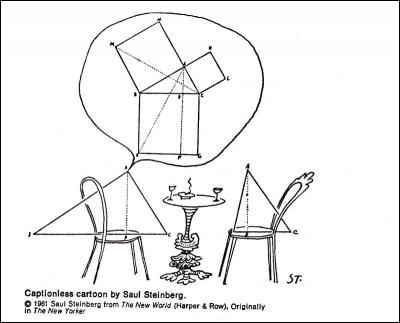 The title of a work of art can help sell it, and captions can complete our understanding of a picture, but the most successful works of Art manage well without an explanation. Our visual senses – sight and insight – have a language of their own. Upon viewing anything, multitudes of information are presented and understood simultaneously, almost instantly. With or without color, images are powerful, possibly even more than words, because with the development of human communication, pictures came first. It’s now widely accepted that symbols marked the origins of written language across the world.
The title of a work of art can help sell it, and captions can complete our understanding of a picture, but the most successful works of Art manage well without an explanation. Our visual senses – sight and insight – have a language of their own. Upon viewing anything, multitudes of information are presented and understood simultaneously, almost instantly. With or without color, images are powerful, possibly even more than words, because with the development of human communication, pictures came first. It’s now widely accepted that symbols marked the origins of written language across the world.
It takes much less time to perceive than it does to write about it. For a hands-on illustration of this, draw a simple Smiley Face, and note the time that it takes to draw it. Afterward write down everything that comes to mind about that icon; what it means, other general impressions and associations. Although this is a familiar icon with clear connotations, possibly something we see every day now, plus almost all of us have drawn it at some point, within seconds of describing it you will realize how much longer it takes to interpret as quickly into words. Harvey Ball, the original artist of the Smiley Face icon must be flabbergasted that succeeding generations would come to coin the term, “emoticons”, based on an indefinite number of facial expressions that spawned from the first, including animated ones that wink and cry, and more.
Essentially, full comprehension in any language relies on those aspects of our mind’s eye: memories and imagination in order to be fully effective. Pictures appeal to our abstract, multidimensional experiences and through the emotions, allowing for individual’s interpretations. There are higher expectations for words. We assume that they alone are qualified when we’re talking on the phone and participating in online computer groups, for instance, but it actually takes extra effort for our intent to be clear when we don’t have access to the visual side of our statements. Even if we speak the same language, the words we choose and their meaning can be misinterpreted and misunderstood.
Relying on the visual aspects of learning, subjects in school are traditionally taught using chalkboards and eraser-boards, stimulating audio and visual senses. Likewise, motivational speakers often use diagrams to help get the point across. The use of imagery is rampant everywhere now. It’s extremely effective in all forms of advertising, and despite all attempts to hold on to all copyrights, if the art is relatable it spreads like wildfire on the internet. Artists of every kind are more vulnerable than ever to fraud.
Harvey Ball’s Smiley Face is a perfect example of how artists are not really in control of what they create. Generally though, any exposure is good exposure, because most people who borrow other people’s graphics or ideas still want to know who the source is. As artists it’s beneficial and constructive for us to continue moving on to the next best project and keep progressing with a lifetime of work. We have to learn to let go of the strong bond we have with the art we create. It’s personal, to be sure, but a good motto is, “There’s more where that came from”.
Along with the resources available to us now, in our progressive age of high technology and wireless everything, it’s still the Human factor that needs refining. We only need to trust intuition as much as logic, with as much emphasis on communicating our emotions as openly and explicitly as we do words and speech. Fortunately there are infinite forms of expression, and inevitably it’s a good thing that creativity is available to everyone, not just artists. Creativity thrives on challenges to communicate effectively; it always has and it always will.
More about Artists and history in the article, The Influence of History.
~
Credits: Above cartoon by Saul Steinberg (1914 – 1999) was a Romanian-born American cartoonist, best known for his work in the New Yorker magazine. Harvey Ball, Wikipedia, Smiley Face
Basic pricing strategies: Artists and the economy
Thursday, September 17th, 2009
How do artists price their work? How do artists price their work honestly, consider themselves as legitimate business persons, still with equal regard to the buyer looking for quality and a fair deal? How do artists price their work reasonably while acknowledging the responsibility we have to our trade; that is, respecting that we, in many cases, base our prices on each other’s? How do artists price their work while competing other artists, when for some, savvy marketing skills yield profits far higher than the quality of their art? (Subjective as art is, we all recognize quality…or do we?). How do artists price their work to sell in a dicey economy? How do artists price their work to sell in a dicey economy that’s dependent on the moral and ethical whims of public spending, and the consequential extremes of society?
 I have just reluctantly slashed the prices on my artwork. I’m not going to soften the announcement with a less violent description, because compromising what I feel are well-earned wages, whether adapting to economic conditions or sharing a percentage of it for any reason, is brutal. My canvases are not the only ones feeling the brush of reality these days though; I see, hear and read that a lot of artists are reevaluating how much they ask for their work. Still, I applaud those artists who continue to stand up for the principles of the unspoken “Artist’s Code”, as Homer Simpson might put it. I’m not fond of unsold art accumulating and spilling out into every room of my home though. The hope is that it will resonate with someone else besides me. It must be seen and it must be shared.
I have just reluctantly slashed the prices on my artwork. I’m not going to soften the announcement with a less violent description, because compromising what I feel are well-earned wages, whether adapting to economic conditions or sharing a percentage of it for any reason, is brutal. My canvases are not the only ones feeling the brush of reality these days though; I see, hear and read that a lot of artists are reevaluating how much they ask for their work. Still, I applaud those artists who continue to stand up for the principles of the unspoken “Artist’s Code”, as Homer Simpson might put it. I’m not fond of unsold art accumulating and spilling out into every room of my home though. The hope is that it will resonate with someone else besides me. It must be seen and it must be shared.
Andy Warhol said: “Art is what sells”.
Maybe the average art enthusiast doesn’t know how we derive prices for our work. Maybe many artists don’t stop to dissect their decisions either. The prices of art in galleries worldwide are inconsistent, confusing and often irrational, and who is authorized to price artwork like that anyway? (Ideally it should be the artist). There are so many variables. I’m probably going to miss naming a few here because methods for pricing vary from artist to artist, hobby or career, and if their art is in the form of products or services. Costs of materials and time spent are considered, and price differences with regard those two factors have everything to do with the quality of time spent and quality of materials. Skill levels, concepts, originality, to some extent size, (ie. sculptures, murals), and if it’s for sale in a home studio in Rocky Mount, North Carolina or a high-end gallery in New York City…and most artists will tell you that above all, the final price has to “feel” right. For some strictly structural Art-minds, feelings in art don’t have a leg to stand on – but in actual fact they have two legs (the human thing). The most unpredictable, nonsensical thing is that even if the artist makes an impact while alive, their older work may be worth much less than the most recent, but when the artist dies, prices of their earliest works may increase.
Will Sing For Feathers, 8 x 10 inches, traditional graphite drawing scanned, drawn digitally, printed, process repeated
As we gain experience, confidence toward change and experimentation, and progressively improve our development as Artists, theoretically we should be able to charge more, which is why “mature” artists naturally feel they deserve to be paid more. Case in point: me. The price I initially wanted to charge for “Dancing With Trees” was $7,500.
It seems like a lot to be asking for those unfamiliar with all that painting or other forms of artwork involves. Time seems to be the most accountable factor in producing it. After viewing the artwork and the price, the most common question is: How long did that take you? It’s a fair question, because for most jobs, time input equals amount charged; a predictable amount of money is paid in exchange for a certain amount of labor within a set amount of time. If only it were that simple.
Using that system to price then, Dancing With Trees is my very best work to date, and it took almost 50 years to learn how to paint it. The price was reduced from $7,500.00 to $5,500.00. Assuming I don’t have to share a percentage of that figure with a gallery, and assuming it sells in the next year, that works out to approximately .7638888888888889 cents per hour. I feel confident that it’s worth that much. That’s a wage about as kookoo as a bird dancing for its own feathers. One day someone will come along who has an extremely large wall and agrees that the painting is worth .7638888888888889 cents per hour, and they will buy it. Each year work hangs around with me though, I decrease the asking price as new pieces are created.
Sometimes I wish I was just a bird!
The vocation of Artist is a calling, and a journey of personal growth. Who doesn’t want to do what they love, learn all the time, contribute the best they have to offer to the world, and earn a living as well? Creativity is not only what we love to do; it is a deeply-rooted habit, a compulsion and an addiction of the very best kind. Art is connected intimately with our lives so we continue to make “stuff” no matter what, and preferably, the artists’ judgment of its’ value will be trusted. In my revised Price List I’ve made a good effort to be fair to the buyer while at the same time remaining true to myself.
Post script, 2016: Well, such is life — due to the economy, and a taste of humble pie, I have since lowered the price of Dancing With Trees 03 to $1,100. It’s still substantial enough to pay for my time and material costs, and perhaps more in tune with the reality of art sales expectations these days.
Peace is Breaking Out Everywhere
Thursday, September 10th, 2009
 “If we could eradicate poverty and give people a sense of worth,
“If we could eradicate poverty and give people a sense of worth,
a great deal of conflict would end. It would not even begin.
Why are we so stupid for so long?”
Bishop Desmond Tutu
The Dryer Elf
Friday, May 1st, 2009
Alright, I try to work every single day, but there are days when work just has to be play for a while. This morning my husband and I had a little argument over who it was that dumped all the clean clothes that were in the laundry basket onto the floor. My position was that it was the elves. We stopped arguing and started laughing.


